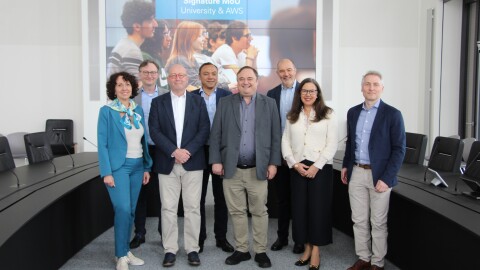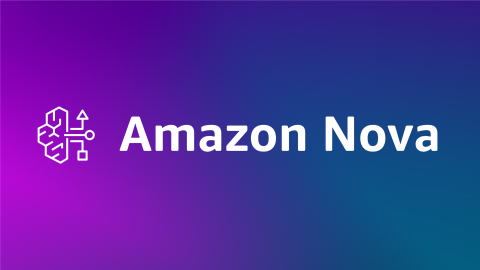Amazon Web Services (AWS) is working with the Swedish municipality of Katrineholm and local water supply company Sörmland Vatten to support a vital upgrade of the town’s storm water infrastructure – creating a new wetland just outside of Katrineholm in Stora Djulö. The new wetland and storm water infrastructure improvement project is supported by a $4 million contribution from AWS as part of our long-term commitment to sustainability.
The project is due to complete in 2026 and will help reduce flooding, improve water quality and biodiversity, and provide citizens with a new recreational space for outdoor activities, such as hiking, biking, and birdwatching. The water conservation project will also form part of a long-term solution for sustainable surface water management to the Katrineholm Logistics Center industrial park, north east of Katrineholm.
Increased water quality and surge preparedness
The town of Katrineholm sits in an important watershed in the Sörmland region of Sweden. Presently, storm water from Katrineholm mainly flows into nearby Lake Näsnaren. The lake has rich biodiversity, is protected under EU Natura 2000 – the largest coordinated network of protected areas in the world – and is a habitat for protected bird species such as the Marsh Harrier, the Bittern, the Slavonian Grebe and the Smew.

Climate change is putting pressure on the current storm water infrastructure systems designed to protect the city from flooding, which also impacts water quality in the lake. There is an urgent need to address storm water infrastructure to prevent flooding in the city center and large volumes of storm water running directly from the city into the lakes, which could result in pollution and overfertilization.
In 2020, a pilot study commissioned by the municipality made recommendations for managing surface and storm water by establishing wetlands just outside Katrineholm. This water conservation project brings that vision to reality by diverting storm water from high-risk areas in the city center, and by protecting water quality in the regional watershed.
The wetland works by delaying and filtering water runoff through different types of vegetation before being released into nearby lakes, which reduces pollution and other risks through a natural, biological process.
This project will improve our management of storm water and provide our citizens with a new place for recreation and education. With support from AWS, we’ve been able to accelerate the launch of this project.
In addition to providing several environmental benefits, the new wetland will offer the citizens of Katrineholm a new green space for recreational activities and habitat for wildlife. The wetland design includes paths for hiking, nature excursions and biking, and opportunities for observing wildlife and bird watching.
Public-private collaboration
Mayor of Katrineholm Göran Dahlström said: “AWS’s continued investment in Katrineholm, and their commitment to the environment, will bring many benefits to the area. Thanks to their support, we’ve been able to accelerate the launch of this project which will help enable sustainable growth for the city. It will improve our management of storm water, and it will provide our citizens with a new place for recreation and education.”

Linda Aldebert, an environmental strategist for the municipality of Katrineholm, explained how the collaboration with AWS has enabled the project to move quickly: “We are very pleased that AWS will be working with us on this important long-term project to benefit water quality in the nearby lakes and water courses of Katrineholm. We see similar challenges in many Swedish cities, and the collaboration with AWS has helped us deal with this quicker and better than we otherwise would have. The wetland will not only help us protect the city from surges but also reduce pollution in our local lakes.”
Manuel Bohnet, Head of Enterprise at AWS Nordics and Baltics, also discussed the project in Katrineholm, saying: “AWS is committed to building a sustainable business for our customers, communities and the world, and water conservation is a key part of that. As proud members of the Katrineholm community since we built our first data center here in 2018, we are excited to support the local environment and provide new recreational opportunities for the community.”
Reducing water use in data centers
At AWS, we are focused on innovation in water conservation as part of our long-term commitments to sustainability and communities.
To reduce both energy and water use in our Swedish data centers, we employ direct evaporative cooling systems, which are designed to utilize outside air to cool servers and significantly reduce the demand for electricity and water to power air conditioning systems. This results in AWS using no water to cool its Swedish data centers for 95% of the year.
During the few very hot days Sweden experiences each year, the company uses a minimal amount of water to help cool the air and remove heat from servers.
AWS is committed to making a positive difference in the communities where we operate, and our commitment to water stewardship goes beyond our own buildings. In addition to reducing our water usage, AWS looks for opportunities to return water to the community. For example, we partnered with the City of Umatilla in the state of Oregon in the U.S. to deliver water to farmers in the AWS US West (Oregon) Region instead of sending it to a waste-water treatment plant. Cooling water goes into a canal that delivers water to the local community to be repurposed for irrigation, and we reuse 96% of the wastewater we discharge from our data centers there.
This is why we’re funding community water programs around the world, including water filtration, rainwater harvesting, and groundwater recharge projects that will bring 250 million gallons of water annually to 165,000 people in India and Indonesia, and watershed restoration projects in Cape Town, South Africa and São Paulo, Brazil that will increase water supply by 41 million gallons per year.
Our path to net zero carbon
With utility-scale and onsite solar and wind projects worldwide, Amazon is the world’s largest corporate buyer of renewable energy. In February 2021, Amazon announced its largest single renewable energy project yet, an offshore wind project in the Netherlands scheduled for operation in 2024 – and we’re just getting started.
Amazon set a goal to achieve 100% renewable energy by 2030, and we are on a path to reach this goal by 2025.
In 2019, Amazon and Global Optimism co-founded The Climate Pledge, a commitment to reach the Paris Agreement 10 years early and be net-zero carbon by 2040.
As a global organisation, we believe our cross-industry leadership will continue to drive the agenda for a greener planet. Climate change is the biggest crisis of our time, and we are committed to using our size and scale to fight it.
Find out more about sustainability at AWS.











